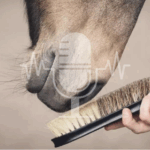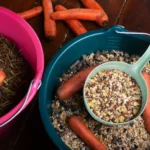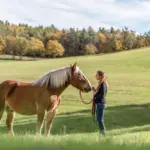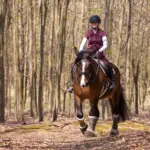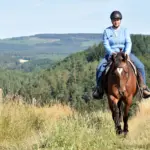Key points at a glance:
- Senior mueslis often contain high levels of sugar and starch
- Older horses are prone to insulin resistance and should be fed a low-sugar, starch-free diet
- Many additives in senior mueslis are not optimally usable by the horse
- Fibre-based protein sources such as sainfoin or alfalfa are the better alternative
- Protein and nutrient supply must be individually adjusted
- Professional advice helps with optimising the ration
- Expensive ready-made products are rarely the best solution
“Give your senior what he needs!” – this is the kind of slogan used by manufacturers of senior horse feeds. The colourful bags promise everything an ageing horse supposedly requires to live to at least 100. But what’s really inside these expensive special feeds? And more importantly – what does your senior actually need?
A look behind the scenes
Open a bag of senior horse feed and you will immediately notice the many colourful components: flaked grains in various shades, pellets, herbs, dried fruit – it all looks appealing and promising at first glance. But this is exactly where the problem begins: the main ingredients are usually processed grain flakes, which are converted into sugar very quickly in the digestive tract.
The insulin trap
As horses get older, many develop a more or less pronounced age-related insulin resistance. Their metabolism can no longer process sugar and starch as efficiently as it did in younger years. The result: after starch-rich meals, blood sugar levels rise sharply.
This puts extra strain on the horse’s system and increases the risk of laminitis and other metabolic problems, often grouped under the umbrella term “Cushing’s” and treated with medication. Yet in many cases, a carefully balanced, low-sugar diet combined with good day-to-day management can make a real difference – sometimes to the point where symptoms fade significantly or disappear altogether.
A look at the ingredient list of many senior horse feeds reveals another issue: alongside grains, you’ll often find by-products from the human food industry, such as pulp, bran, or husks. While these fibre sources are cheap for the manufacturer, they offer little real benefit to the horse – and some can even interfere with the absorption of other nutrients.
What your senior really needs
Older horses need one thing above all: high-quality, easily digestible fibre and enough – but not excessive – protein. Both can be found in natural feeds such as sainfoin, alfalfa, or specially formulated vital cobs made from protein-rich plant blends. These fibre- and protein-rich feeds provide essential nutrients without overloading the metabolism with sugar and starch.
The protein dilemma
“But my senior needs protein to maintain muscle!” – that’s true, but the amount has to be right. Too much protein puts extra strain on the kidneys, which are often less efficient in older age. Too little protein, on the other hand, leads to muscle loss. Striking the right balance is key and should be worked out individually. An experienced equine nutritionist can help you put together a forage-based feeding plan that gives your horse the support it needs without placing unnecessary stress on the system.
The path to optimal nutrition
Rather than automatically reaching for a bag of senior feed, it’s always better to put together a ration tailored to the individual horse. An example of a well-balanced basic diet for an older horse could include:
- High-quality hay and, if needed, soaked hay cobs as the foundation
- Fibre-based protein sources such as sainfoin
- A high-quality, vitamin-rich inorganic mineral supplement
- Targeted additions for specific needs, e.g. herbal blends to support joint health or circulation in horses with arthritis or cardiovascular issues
The cost reality
A bag of senior horse feed often costs three to four times as much as more sensible, healthy feed options. It’s not always obvious, because today’s bags are usually well under 25 kg – and it’s easy to just swing by the feed store every week for another one. But the amount you spend each month on senior mixes could usually buy high-quality individual ingredients that benefit your horse far more. The supposed convenience of ready-made feed rarely pays off in the long run.
The path to an individual solution
Every horse is different, and every senior has its own specific needs. A knowledgeable equine nutritionist can help you put together the ideal ration for your horse. This investment in good advice often pays off quickly – through lower feed bills, reduced veterinary costs, and, most importantly, a healthier horse.
Less is more – except when it comes to forage
The best diet for a senior horse is often the simplest. Instead of pricey commercial mixes with questionable additives, focus on natural, fibre-based feeds: plenty of good-quality hay, hay cobs if needed, and, where appropriate, fibre-based protein such as sainfoin or alfalfa. Get professional guidance when planning the ration and keep a close eye on your horse. Nature usually has the best solutions – we just need to use them wisely.
Remember: a colourful feed mix might look appealing in the bucket, but your horse doesn’t need a colourful mix – it needs nutrients it can truly digest and use. You’ll often find those in simpler-looking, but higher-quality feeds.
You can find more information on caring for older horses on our dedicated topic page: Older Horses


